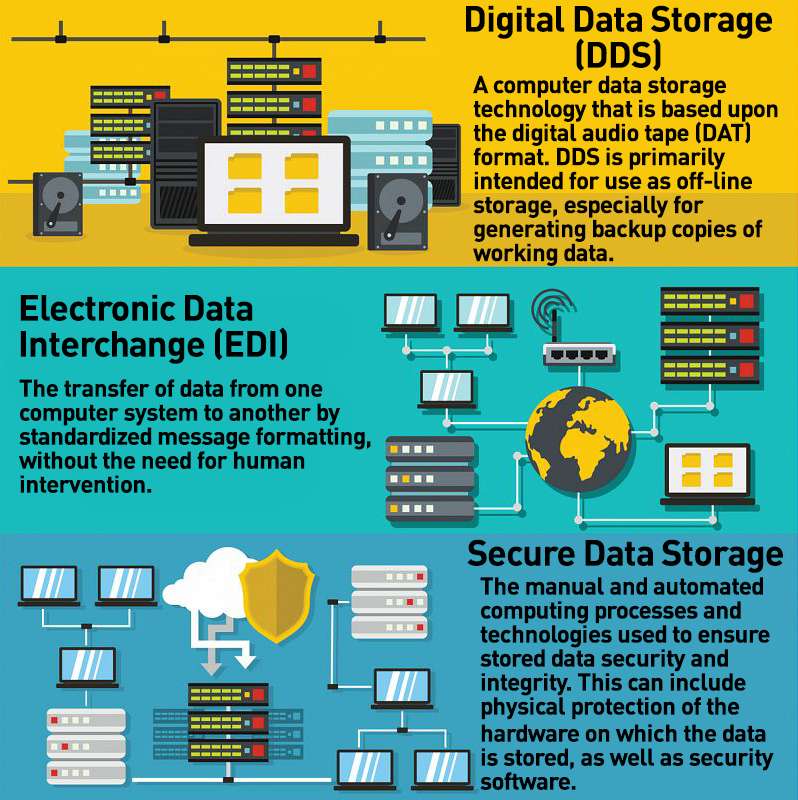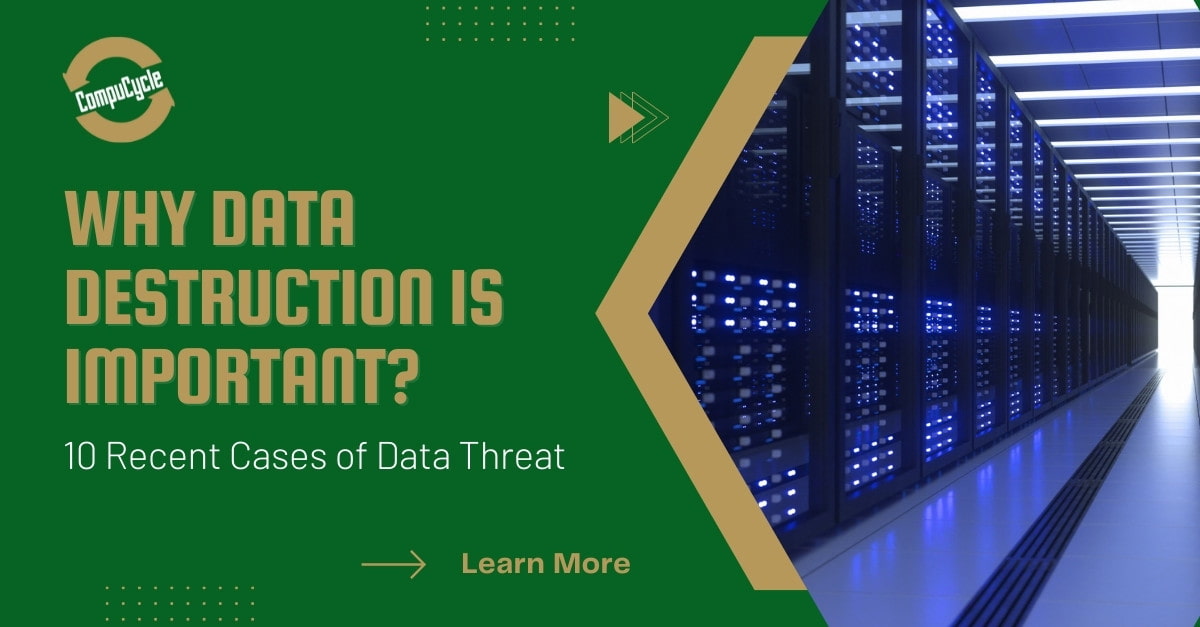Best Practices for Data Destruction to Fortify Your Cyber Security Structure
Best Practices for Data Destruction to Fortify Your Cyber Security Structure
Blog Article
The Essential Nature of Information Destruction in Upholding Computer Safety Providers and Protecting Versus Unauthorized Accessibility
In an era where data breaches and identification burglary are increasingly widespread, the value of effective data damage can not be overstated. Organizations needs to recognize that the failure to effectively throw away sensitive details positions not only lawful and monetary risks yet also a possible disintegration of customer trust fund. Different methods, from information wiping to physical damage, function as essential safeguards versus unauthorized access. Recognizing the ramifications of data damage practices and conformity with policies elevates necessary concerns concerning the adequacy of present techniques and their lasting practicality in the face of evolving dangers.
Importance of Information Destruction
In a significantly digital world, the importance of data devastation can not be overemphasized. As organizations generate vast amounts of delicate info, the possible effects of failing to appropriately handle and dispose of that information come to be increasingly serious. Data violations, identification burglary, and business reconnaissance pose considerable threats, highlighting the requirement of efficient data destruction techniques.

Moreover, as modern technology evolves, so also do the techniques through which malicious stars look for to exploit delicate details. Organizations should stay watchful and aggressive in their information destruction techniques to guard versus these developing dangers. By focusing on information destruction, firms not just protect their possessions but additionally foster depend on amongst clients and stakeholders, showing a commitment to responsible data monitoring and security practices.
Techniques of Effective Information Devastation
To ensure the permanent and total damage of delicate information, companies can use a selection of reliable approaches customized to their specific needs. One of one of the most common methods is data cleaning, which entails making use of specialized software program to overwrite existing information numerous times, making recuperation basically difficult. This is specifically beneficial for solid-state drives and difficult drives, where standard deletion methods are inadequate.
Another reliable strategy is degaussing, which makes use of solid magnetic fields to interrupt the magnetic domains on storage media, rendering the data irretrievable. This approach is specifically fit for magnetic storage space devices, such as tape drives and tough disks.
Physical damage is additionally a sensible alternative, including the shredding, crushing, or incineration of storage space gadgets. This method warranties that information can not be recuperated, making it perfect for organizations taking care of extremely sensitive details.

Compliance With Data Security Rules
Organizations must not only concentrate on reliable data destruction techniques yet additionally guarantee conformity with information defense regulations that regulate how sensitive information is taken care of and dealt with. Sticking to these policies is crucial for preserving and guarding personal information client trust fund. Regulations such as the General Data Protection Regulation (GDPR) in the European Union and the Medical Insurance Mobility and Liability Act (HIPAA) in the USA enforce rigorous standards on information administration, that include needs for the safe disposal of delicate details.
To accomplish conformity, organizations should execute extensive data destruction plans that straighten with these lawful frameworks. This includes recognizing information that needs damage, establishing methods for safe and secure methodsâEUR" such as shredding physical media or utilizing software application that satisfies industry criteria for information wipingâEUR" and maintaining comprehensive records of destruction tasks. Routine audits ought to be performed to make sure adherence to these policies and to identify any kind of possible areas for improvement.
Failing to adhere to information defense laws can cause considerable lawful ramifications, consisting of large fines and damages to an organization's reputation. Incorporating compliance right into data damage techniques is not only a lawful obligation but likewise an important component of a durable info safety and security strategy.
Effects of Poor Data Handling
Poor information handling can bring about serious consequences that prolong past instant functional troubles. Organizations may deal with significant financial losses as a result of information breaches, which commonly lead to costly removal initiatives, legal costs, and governing penalties. These financial implications can impede and strain sources growth, ultimately affecting a company's bottom line.
Additionally, inadequate information handling can significantly harm a company's online reputation. Partners, customers, and stakeholders might shed count on an entity that falls short to shield delicate details, bring about lowered client loyalty and prospective loss of organization possibilities. This disintegration of depend on can take years to restore, if it can be brought back in any way.
Furthermore, organizations could face lawful implications developing from non-compliance with data protection regulations. Such violations may result in examinations and moved here charges, intensifying the financial problem and further tarnishing the organization's photo.
In the realm of cybersecurity, inadequate data management methods can develop susceptabilities that make systems more at risk to unauthorized access and cyberattacks. Eventually, these consequences underscore the important value of carrying out durable information taking care of procedures to secure delicate info and preserve organizational integrity.
Finest Practices for Secure Data Disposal


Firstly, data Visit Your URL must be identified according to its level of sensitivity. Delicate info requires much more strenuous disposal approaches, such as shredding physical papers and using advanced software application for electronic information cleaning. Utilizing licensed information destruction solutions makes certain conformity with industry guidelines and requirements.
Secondly, organizations need to execute an information disposal plan that mandates routine audits. This policy should outline the treatments for data retention and destruction, ensuring that obsolete information is taken care of without delay and safely. Educating workers on these procedures is necessary to promoting check this site out a society of safety understanding.
Last but not least, keeping thorough documents of disposed data boosts liability and gives a clear audit path. This paperwork should consist of the kind of data damaged, the technique utilized, and the date of disposal.
Verdict
Embracing durable techniques such as information cleaning, degaussing, and physical devastation, together with conformity with guidelines like GDPR and HIPAA, is necessary for safeguarding delicate details. Overlooking correct information disposal practices can lead to serious effects, including information violations and lawful effects.
In a period where information breaches and identification burglary are progressively common, the significance of efficient data destruction can not be overemphasized. data destruction. Information breaches, identity burglary, and business espionage posture substantial hazards, underscoring the need of reliable information damage methods
Compliance with regulations such as GDPR and HIPAA requireds that companies apply rigid information security actions, including the safe and secure destruction of data at the end of its lifecycle.
By prioritizing data damage, companies not only protect their assets but also foster trust fund amongst clients and stakeholders, demonstrating a dedication to accountable information monitoring and protection techniques.
Organizations must not only concentrate on effective data damage techniques yet also ensure compliance with data defense laws that control just how delicate details is managed and disposed of.
Report this page